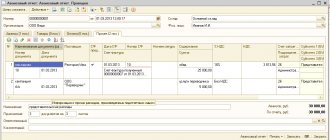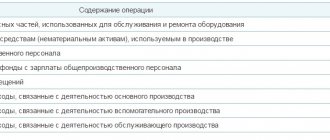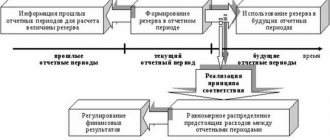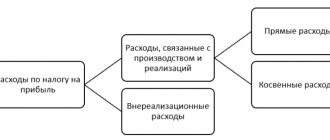PBU in 2021: the whole list
Different organizations must have different accounting standards in 2021 and take into account different accounting principles. Accordingly, from the general list of PBUs for 2021, you should select the PBUs you need. We present a table with the current list of PBUs for 2021 and explain the basic procedure for their application.
| PBU for 2021 table | |
| Name | Standard |
| PBU 1/2008 “Accounting policies of the organization” | Order of the Ministry of Finance of Russia dated October 6, 2008 No. 106n |
| PBU 2/2008 “Accounting for construction contracts” | Order of the Ministry of Finance of Russia dated October 24, 2008 No. 116n |
| PBU 3/2006 “Accounting for assets and liabilities, the value of which is expressed in foreign currency” | Order of the Ministry of Finance of Russia dated November 27, 2006 No. 154n |
| PBU 4/99 “Accounting statements of an organization” | Order of the Ministry of Finance of Russia dated July 6, 1999 No. 43n |
| PBU 5/01 “Accounting for inventories” | Order of the Ministry of Finance of Russia dated June 9, 2001 No. 44n |
| PBU 6/01 “Accounting for fixed assets” | Order of the Ministry of Finance of Russia dated March 30, 2001 No. 26n |
| PBU 7/98 “Events after the reporting date” | Order of the Ministry of Finance of Russia dated November 25, 1998 No. 56n |
| PBU 8/2010 “Estimated liabilities, contingent liabilities and contingent assets” | Order of the Ministry of Finance of Russia dated December 13, 2010 No. 167n |
| PBU 9/99 “Income of the organization” | Order of the Ministry of Finance of Russia dated May 6, 1999 No. 32n |
| PBU 10/99 “Expenses of the organization” | Order of the Ministry of Finance of Russia dated May 6, 1999 No. 33n |
| PBU 11/2008 “Information about related parties” | Order of the Ministry of Finance of Russia dated April 29, 2008 No. 48n |
| PBU 12/2010 “Information by segments” | Order of the Ministry of Finance of Russia dated November 8, 2010 No. 143n |
| PBU 13/2000 “Accounting for state aid” | Order of the Ministry of Finance of Russia dated October 16, 2000 No. 92n |
| PBU 14/2007 “Accounting for intangible assets” | Order of the Ministry of Finance of Russia dated December 27, 2007 No. 153n |
| PBU 15/2008 “Accounting for loans and credits and the costs of servicing them” | Order of the Ministry of Finance of Russia dated October 6, 2008 No. 107n |
| PBU 16/02 “Information on discontinued activities” | Order of the Ministry of Finance of Russia dated July 2, 2002 No. 66n |
| PBU 17/02 “Accounting for expenses for research, development and technological work” | Order of the Ministry of Finance of Russia dated November 19, 2002 No. 115n |
| PBU 18/02 “Accounting for income tax calculations” | Order of the Ministry of Finance of Russia dated November 19, 2002 No. 114n |
| PBU 19/02 “Accounting for financial investments” | Order of the Ministry of Finance of Russia dated December 10, 2002 No. 126n |
| PBU 20/03 “Information on participation in joint activities” | Order of the Ministry of Finance of Russia dated November 24, 2003 No. 105n |
| PBU 21/2008 “Changes in estimated values” | Order of the Ministry of Finance of Russia dated October 6, 2008 No. 106n |
| PBU 22/2010 “Correcting errors in accounting and reporting” | Order of the Ministry of Finance of Russia dated June 28, 2010 No. 63n |
| PBU 23/2011 “Cash Flow Statement” | Order of the Ministry of Finance of Russia dated February 2, 2011 No. 11n |
| PBU 24/2011 “Accounting for costs for the development of natural resources” | Order of the Ministry of Finance of Russia dated October 6, 2011 No. 125n |
| Regulations on accounting of long-term investments* | Letter of the Ministry of Finance of Russia dated December 30, 1993 No. 160 |
| Regulations on accounting and reporting* | Order of the Ministry of Finance of Russia dated July 29, 1998 No. 34n |
Tax and accounting
An additional regulatory document on the issues of reflecting R&D is Government Decree No. 988 dated December 24, 2008. It provides a list of research and development that is classified as other costs. Enterprises included in the list of work are recognized after completing the task during the period of actual completion of all activities on it. In accounting, these costs are shown with an increasing factor of 1.5. After completing research activities, the organization must not only show the costs incurred in accounting, but also submit to the Federal Tax Service a report on the R&D it conducted.
The procedure for recognizing, recording and writing off expenses related to R&D was approved by PBU 17/02. Costs are accumulated on account 08. In order for expenses to be accepted for accounting by an enterprise, a number of conditions must be met:
- the exact amount of expenses incurred can be identified;
- all expenses are documented;
- the results obtained as a result of R&D have the ability to bring benefits in the future;
- the results of the work can be shown to others through demonstration activities.
After the completion of the formation of the amount of costs on account 08, the valuation is transferred to account 04 and the status of intangible assets appears. This is only possible if the organization has legal grounds to consider the asset its own (if a patent or certificate has not been obtained, then the costs will be shown as R&D expenses). When a new asset is created, its cost is written off through regular depreciation. In the absence of rights to recognize development results as intangible assets, expenses are gradually transferred to expense accounts from account 04. The duration of the period for transferring costs to expenses for each enterprise is set individually and is fixed by accounting policies.
FOR YOUR INFORMATION! If the criteria for recognizing R&D expenses are not fully met, then the expenses should be shown in turnover on account 91.
In tax accounting, there is a rule of one-time write-off of R&D expenses after completion of work. In accounting, expenses begin to be included in R&D costs if there are signs of future economic benefits from the asset being developed:
- it is technically possible to complete the research or obtain the desired development result;
- there are options for practical application of the results of the work;
- the company is guaranteed to have enough resources to complete the project;
- there is a market for products produced using the results of research or development;
- thanks to new assets, internal problems or objectives of the institution can be solved;
- costs can be calculated and justified.
FOR REFERENCE! The difference between tax accounting and accounting in relation to R&D is that, according to the standards of the Tax Code of the Russian Federation, the costs of research and development activities can be recognized even if the desired result could not be achieved.
Write-off of expenses directly related to R&D can occur using the straight-line method or the write-off method in proportion to output. Depreciation should take into account the total useful life, but the write-off period cannot exceed 5 years. Depreciation charges are formed from the first day of the month that follows the month in which R&D expenses are transferred to the status of an intangible asset.
Accounting assumes separate reflection in the accounts of R&D costs. Analytics is carried out in the context of types of research and types of development. All incurred costs are allowed to be inventoried. Before starting the control calculation of expenses, the audit should affect the contractual documentation relating to R&D (in terms of acquired material resources, purchase of non-financial assets to support the work process).
R&D accounting entries
Typical correspondence accounts for accounting for various expenses for ongoing R&D require the participation of an active 08 account in them. Its debit accumulates the costs incurred by the company. After all activities are completed and the asset is fully ready for operation, its value, actually formed on account 08, is transferred to the debit of account 04.
In the process of development or research work in accounting, the following standard records can be used:
- D08 - K02 - at the time of writing off depreciation of the equipment involved and special-purpose fixed assets;
- D08 - K10 - when writing off the cost of material resources that were needed by the department involved in R&D;
- D08 - K70 - in the amount of accrued earnings to employees who work on improving products or creating new models and technologies;
- D08 - K69 - insurance premiums are reflected, without which it is impossible to calculate and pay wages legally to hired personnel.
When all the costs have been collected on account 08, the development product is ready and can be implemented into production or the company’s management system, account 08 is credited, and account 04 is debited when indicating the “R&D Results” subaccount. After receiving a patent or certificate, the result of development becomes an intangible asset and is transferred from the sub-account with R&D results to the sub-account of intangible assets on account 04.
If the expenses for the work of developers and researchers do not lead to the expected results, the effect is considered negative. Amounts contributed for developments that were not implemented in accordance with expectations are written off by posting D91.2 - K08.
Order of the Ministry of Finance of the Russian Federation dated November 19, 2002 No. 115n “On approval of the Accounting Regulations “Accounting for expenses on research, development and technological work” PBU 17/02″
With changes and additions from:
September 18, 2006, May 16, 2021
In pursuance of the Program for reforming accounting in accordance with international financial reporting standards, approved by Decree of the Government of the Russian Federation of March 6, 1998 N 283 (Collection of Legislation of the Russian Federation, 1998, N 11, Art. 1290), I order:
1. Approve the attached Accounting Regulations “Accounting for expenses for research, development and technological work” PBU 17/02.
2. Enter into force this order from January 1, 2003.
| Minister | A.L. Kudrin |
Registered with the Ministry of Justice of the Russian Federation on December 11, 2002.
Registration N 4022
Accounting Regulations “Accounting for expenses on research, development and technological work” PBU 17/02 (approved by order of the Ministry of Finance of the Russian Federation dated November 19, 2002 N 115n)
I. General provisions
1. These Regulations establish the rules for the formation in the accounting and financial statements of commercial organizations that are legal entities under the legislation of the Russian Federation (with the exception of credit institutions) of information on expenses associated with the implementation of research, development and technological work.
This Regulation is applied by organizations that carry out research, development and technological work on their own and/or are contractual customers for the specified work.
2. These Regulations apply to research*, development and technological work:
for which results were obtained that are subject to legal protection, but were not formalized in the manner prescribed by law;
for which results were obtained that are not subject to legal protection in accordance with the norms of current legislation.
3. This Regulation does not apply to unfinished research, development and technological work, as well as to research, development and technological work, the results of which are taken into account in accounting as intangible assets.
4. This Regulation does not apply to the organization’s expenses for the development of natural resources (conducting geological survey of subsoil, exploration (additional exploration) of developed deposits, preparatory work in the extractive industries, etc.), expenses for the preparation and development of production, new organizations, workshops, units (start-up costs), costs for preparing and mastering the production of products not intended for serial and mass production, as well as costs associated with improving technology and organization of production, improving product quality, changing product design and other operational properties carried out during the production (technological) process.
5. Information on expenses for research, development and technological work is reflected in accounting as investments in non-current assets.
Analytical accounting of expenses for research, development and technological work is carried out separately by type of work, contracts (orders).
6. The unit of accounting for expenses for research, development and technological work is an inventory object.
For the purposes of these Regulations, an inventory object is considered to be a set of expenses for work performed, the results of which are independently used in the production of products (performance of work, provision of services) or for the management needs of the organization.
II. Recognition of expenses for research, development and technological work
7. Expenses for research, development and technological work are recognized in accounting if the following conditions are met:
the amount of expenditure can be determined and confirmed;
there is documentary evidence of the completion of work (acceptance certificate for completed work, etc.);
the use of work results for production and (or) management needs will lead to the receipt of future economic benefits (income);
the use of the results of research, development and technological work can be demonstrated.
If at least one of the above conditions is not met, the organization's expenses related to the implementation of research, development and technological work are recognized as other expenses of the reporting period.
Expenses for research, development and technological work that did not produce a positive result are also recognized as other expenses of the reporting period.
8. If expenses for research, development and technological work in previous reporting periods were recognized as other expenses, then they cannot be recognized as non-current assets in subsequent reporting periods.
III. Composition of expenses for research, development and technological work
9. Expenses for research, development and technological work include all actual expenses associated with the implementation of the specified work.
Expenses for carrying out research, development and technological work include:
the cost of inventories and services of third-party organizations and persons used in performing the specified work;
costs of wages and other payments to employees directly employed when performing the specified work under an employment contract;
contributions for social needs (including unified social tax);
the cost of special equipment and special fittings intended for use as test and research objects;
depreciation of fixed assets and intangible assets used in performing the specified work;
costs for the maintenance and operation of research equipment, installations and structures, other fixed assets and other property;
general business expenses, if they are directly related to the implementation of these works;
other expenses directly related to the implementation of research, development and technological work, including testing costs.
IV. Write-off of expenses for research, development and technological work
10. Expenses for research, development and technological work are subject to write-off as expenses for ordinary activities from the 1st day of the month following the month in which the actual application of the results obtained from performing the specified work in the production of products (execution of work) began , provision of services), or for the management needs of the organization.
11. Write-off of expenses for each completed research, development, and technological work is carried out in one of the following ways:
linear method;
a method of writing off expenses in proportion to the volume of products (works, services).
The period for writing off expenses for research, development and technological work is determined by the organization independently based on the expected period of use of the results of research, development and technological work, during which the organization can receive economic benefits (income), but no more 5 years. In this case, the indicated useful life cannot exceed the life of the organization.
12. Write-off of expenses for research, development and technological work in a linear manner is carried out evenly over the accepted period.
13. When writing off expenses in proportion to the volume of products (work, services), the determination of the amount of expenses for research, development and technological work to be written off in the reporting period is made based on the quantitative indicator of the volume of products (work, services) in the reporting period and the ratio of the total amount of expenses for specific research, development, and technological work and the entire expected volume of products (work, services) for the entire period of application of the results of a specific work.
14. During the reporting year, the write-off of expenses for research, development and technological work as expenses for ordinary activities is carried out evenly in the amount of 1/12 of the annual amount, regardless of the method used to write off expenses.
There is no change in the accepted method of writing off expenses for specific research, development and technological work during the period of application of the results of a specific work.
An organization that has the right to use simplified accounting methods, including simplified accounting (financial) reporting, can write off expenses for research, development and technological work as expenses for ordinary activities in full as they are carried out.
15. In case of termination of the use of the results of specific research, development or technological work in the production of products (performance of work, provision of services), or for the management needs of the organization, as well as when it becomes obvious that no economic benefits will be received in the future from the use of the results of the specified work, the amount of expenses for such research, development or technological work, not included in expenses for ordinary activities, is subject to write-off as other expenses of the reporting period on the date of the decision to stop using the results of this work.
V. Disclosure of information in financial statements
16. The organization’s financial statements must reflect the following information:
on the amount of expenses attributed in the reporting period to expenses for ordinary activities and other expenses by type of work;
on the amount of expenses for research, development and technological work not written off as expenses for ordinary activities and (or) other expenses;
on the amount of expenses for unfinished research, development and technological work.
If significant, information on expenses for research, development and technological work is reflected in the balance sheet under a separate group of asset items (section “Non-current assets”).
17. As part of the information on the accounting policies of the organization in the financial statements, at least the following information is subject to disclosure:
on methods of writing off expenses for research, development and technological work;
on the deadlines adopted by the organization for applying the results of research, development and technological work.
______________________________
* For the purposes of these Regulations, research work includes work related to the implementation of scientific (research), scientific and technical activities and experimental developments, defined by the Federal Law of August 23, 1996 N 127-FZ “On Science and State Scientific- technical policy" (Collection of Legislation of the Russian Federation, 1996, N 35, Art. 4137; 1998, N 30, Art. 3607, N 51, Art. 6271; 2000, N 2, Art. 162; 2001, N 1 (Part II ), Art. 20).
- Back
- Forward
The purpose and objectives of accounting for R&D
R&D costs should be reflected in the accounts of synthetic and analytical accounting, since they reduce the taxable base for profits. The purpose of reflecting R&D in accounting is to identify all expenses that should be classified as expenses for this type of activity, their reflection in the accounting and tax accounts, as well as to identify the legality of applying PBU 17/02 for accounting for R&D expenses.
In relation to this goal, the following tasks of accounting for R&D can be identified:
- determining whether costs are classified as R&D or should be included in other company expenses;
- identifying a positive result from R&D and determining the period of its useful use;
- correct reflection in the accounts of synthetic and analytical accounting in order to summarize all costs incurred;
- correct write-off of expenses in accounting and tax accounting in accordance with adopted legislation.
I. General provisions
1.
This Regulation establishes the rules for the formation in the accounting and financial statements of commercial organizations that are legal entities under the laws of the Russian Federation (with the exception of credit institutions), information on expenses associated with the implementation of research, development and technological work.
This Regulation is applied by organizations that carry out research, development and technological work on their own and/or are the contracting authority for the said work.
2.
This Regulation applies to research, development and technological work:
- for which results were obtained that are subject to legal protection, but were not formalized in the manner prescribed by law;
- for which results were obtained that are not subject to legal protection in accordance with the norms of current legislation.
For the purposes of this Regulation, scientific research includes work related to the implementation of scientific (research), scientific and technical activities and experimental developments, defined by the Federal Law of August 23, 1996 No. 127-FZ “On science and state scientific and technical politics
"(Collected Legislation of the Russian Federation, 1996, No. 35, Art. 4137; 1998, No. 30, Art. 3607, No. 51, Art. 6271; 2000, No. 2, Art. 162; 2001, No. 1 (Part II), Art. .20).
3.
This Regulation does not apply to unfinished research, development and technological work, as well as to research, development and technological work, the results of which are taken into account in accounting as intangible assets.
4.
This Regulation does not apply to the organization’s expenses for the development of natural resources (conducting geological studies of subsoil, exploration (additional exploration) of developed deposits, preparatory work in the extractive industries, etc.), expenses for the preparation and development of production, new organizations, workshops, units (start-up costs), costs for preparing and mastering the production of products not intended for serial and mass production, as well as costs associated with improving technology and production organization, improving product quality, changing product design and other operational properties carried out during production (technological) process.
5.
Information on expenses for research, development and technological work is reflected in accounting as investments in non-current assets.
Analytical accounting of expenses for research, development and technological work is carried out separately by type of work, contracts (orders).
6.
The unit of accounting for expenses for research, development and technological work is an inventory object.
For the purposes of these Regulations, an inventory object is considered to be a set of expenses for work performed, the results of which are independently used in the production of products (performance of work, provision of services) or for the management needs of the organization.






